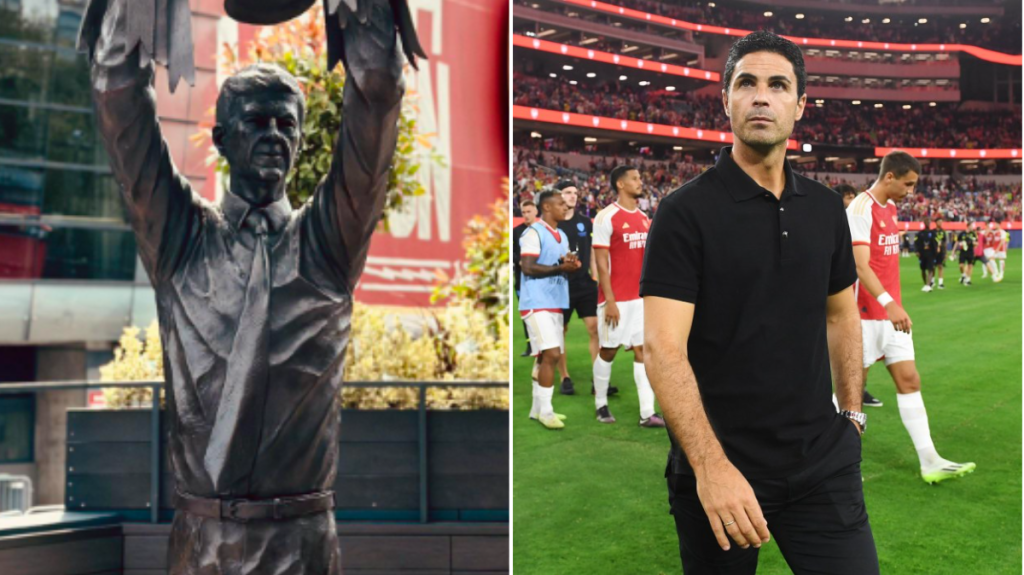
Arsenal have unveiled a statue of legendary manager that will reside outside the Emirates Stadium.
The Frenchman masterminded a period of unprecedented success at the north club with three titles and seven FA Cups only doing part justice to the impact he had over the course of his 21-year reign.
It was Wenger’s drive and ambition that played a key role in the decision to leave Highbury in 2006 and build the 60,000 seater stadium which will now house a the bronze statue, created by award-winning sculptor Jim Guy, which stands 3.5 metres high and weighs approximately half a tonne.
‘It’s such a great tribute that the club has done something special for Arsene that he fully deserves and merits,’ said current manager Mikel Arteta, who was signed by Wenger during the Spaniard’s playing days.
‘With a statue now at the stadium, Arsene can have that recognition and be here at our club forever.
“I’m so grateful to have played for Arsene at this club in my career. He chose me to be one of his players and selected me to be the captain of the club and that’s something I will never forget.’
Wenger will return to the Emirates Stadium for only the second time since his departure five years ago next weekend when he will be the guest of honour for Arsenal’s pre-season friendly against another of his former teams, Monaco.
Tim Lewis, Arsenal Vice Chair, added: ‘We’re delighted to recognise and celebrate Arsene Wenger’s outstanding leadership and career at Arsenal Football Club.
‘Arsene’s contribution to, and achievements with, the club mark him out as the club’s greatest manager.
‘He treated the club and its supporters to many trophies and fantastic memories and brought a revolution in the running of the club, an unbeaten season and the move to Emirates Stadium.
‘It is fitting, therefore, that as a mark of the club’s enduring respect and gratitude a magnificent statue of Arsene now stands outside Emirates Stadium.
‘It is a place where our supporters and all who visit Emirates Stadium can be reminded of Arsene’s contribution and his legacy.’
, . , and .




















